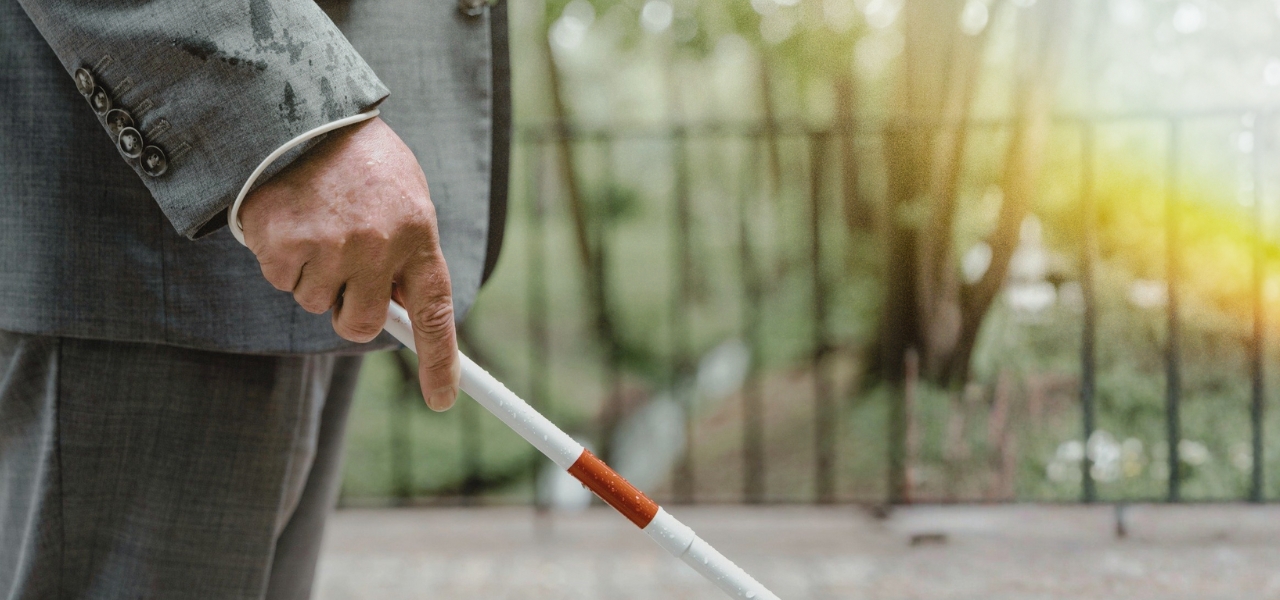InviOcean and White Cane Day: The Shared Philosophy of Freedom
October 15 marks International White Cane Safety Day. It is not so much a holiday as a day of remembrance, meant to remind society that among us are people with visual impairments, including those who are completely blind. It is a day of solidarity with them.
On this day, many countries hold events and educational initiatives aimed at raising awareness of the rights and needs of blind and visually impaired people. City quests with blindfolds, training seminars on digital accessibility, demonstrations of tactile technologies, and public forums are organized around the world.
All these are not just events — they are reminders of the right to independence and equal opportunity. They are a way to show that accessibility is not a bonus, but a fundamental standard of the modern world.
We share the philosophy of this symbol: just as a simple cane opens the way through city streets, digital technologies should open the way to information. Our work continues the same principles of independence and accessibility.
The Symbol Seen by the Whole World

The white cane has always been a faithful companion to a blind person, helping to carve a path through complete darkness. One of its possible inventors is believed to be the British photographer James Biggs, who lost his sight. In 1921, he painted his cane white to make himself more visible while moving through the streets.
Ten years later, the white cane received official recognition and institutional approval.
In 1930, in France, a woman of aristocratic origin — Guilly d’Herbemont — deeply concerned about the dangers faced by blind Parisians, began systematic work to turn the white cane into an official symbol. Her efforts included:
- Publishing an open letter in L’Écho de Paris;
- Gaining support from the Paris police prefect;
- Organizing meetings with the heads of institutions for the blind;
- Personally funding the production of the first thousand white canes.
The ceremonial event held on February 7, 1931, at the Cercle de l’Union Interalliée, attended by ministers of the French government, marked the moment of the cane’s official recognition. The presentation of the first symbolic canes to a blind war veteran and a civilian signified the beginning of a new chapter in the history of protecting the rights of people with visual disabilities.
The Establishment of International White Cane Day
After its official recognition in France, the white cane began to spread rapidly across Europe. By 1932, Germany, Italy, and Spain had adopted the French model, and by 1935, the white cane had become a recognizable symbol in most European capitals.
An important milestone came in 1950, when the first international standard for the white cane was adopted at the Congress of the World Council for the Welfare of the Blind.
On October 15, 1964, at the initiative of U.S. President Lyndon Johnson, White Cane Day was celebrated for the first time in the United States.
In 1969, the International Federation of the Blind (IFB), at its General Assembly in Colombo, officially declared October 15 as International White Cane Day. By 1972, the day was being observed in 32 countries.
As of 2025, the white cane is officially recognized and used as an identification tool for blind people in 189 countries worldwide.
The Functionality of the White Cane: More Than Just Support
For a blind person, the white cane is a multifunctional tool that performs both tactile and navigational roles, including:
- Protective Function
The cane creates a buffer space in front of the user, preventing collisions with obstacles. When used correctly, it becomes an “antenna,” detecting a safe path.
- Auditory Echolocation
Tapping and sliding sounds from the cane form an acoustic picture of the environment. By changes in sound, the user can identify elevated obstacles — such as walls, poles, or parked cars.
- Tactile Scanning
Sliding the cane across the surface helps detect lower obstacles and differences in elevation, such as steps, curbs, manholes, pits, or changes in texture — for example, asphalt, gravel, tile, or concrete.
- Support Function
It provides additional stability when walking on uneven surfaces or in challenging weather conditions.
- Signaling Function
The white color and characteristic movements of the cane alert others to the presence of a blind person. This adds an extra layer of safety in urban environments.
Technological Evolution
Modern “smart” canes enhance basic functions through technological solutions:
- Ultrasonic sensors warn about obstacles;
- GPS navigation helps to build routes;
- Tactile interfaces convey information through vibration;
- Mobile applications extend recognition capabilities.
InviOcean: The White Cane for the Digital World
Today, the world is moving increasingly online, which means that the accessibility of interfaces, applications, games, and educational resources is becoming just as essential as the accessibility of streets and transportation.
Our mission is simple yet vital: we do for the digital world what the white cane does for the streets. We help blind and visually impaired people navigate online spaces freely, confidently, and independently.
InviOcean doesn’t do this alone — we move forward together with the community, experts, and those who face online barriers every day. We turn their experiences into routes, tips, and tools so that no one feels lost in the technological landscape.
What We Do:
- We scan websites and apps to identify barriers;
- We map safe routes across digital resources;
- We warn about potential navigation challenges online;
- We create points of support in complex interfaces;
- We compile catalogs of accessible resources — true maps of online landscapes;
- We educate users, sharing knowledge about accessibility.
We are the continuation of the white cane’s philosophy in the technological era. If the cane helps to overcome physical barriers, our work helps people overcome digital ones. We do this every day, step by step, making the digital environment clearer and safer.
And today, on White Cane Day, we congratulate everyone for whom this symbol means freedom from limitations — and remind the world that accessibility is not an annual celebration but a daily responsibility. Join this philosophy: speak, create, support, and help build a digital world where everyone feels confident.
